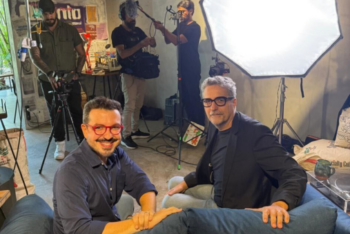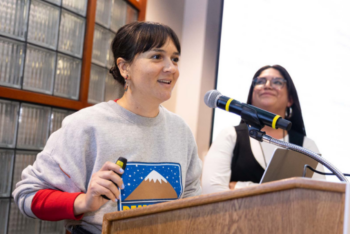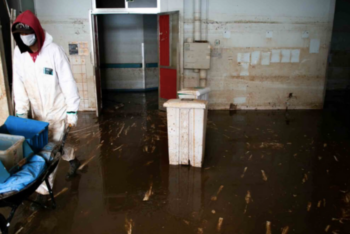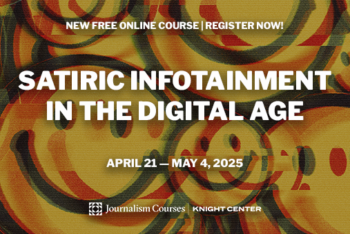
Although they don't usually represent significant additional income, investigative journalism books offer opportunities for reflection, prestige and editorial support, making them an alternative to precariousness and attacks afflicting journalism in Mexico.
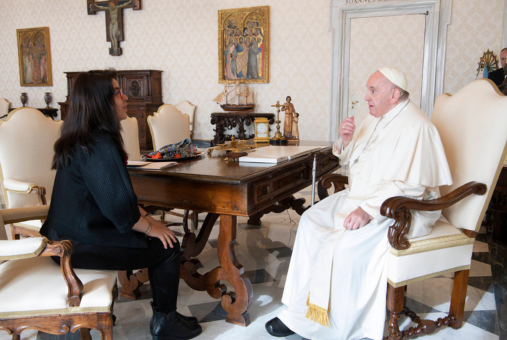
On April 15, the Vatican formalized the dissolution of the Sodalitium Christianae Vitae, a Peru-based movement investigated by two reporters for sexual abuse, financial mismanagement, and spiritual coercion by top members.
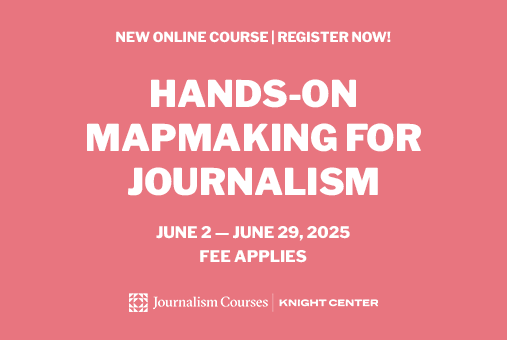
If you’ve ever come across a powerful dataset and thought it could be more impactful as a map, you’re not alone. Maps can reveal patterns, highlight disparities and help audiences connect with information in ways that plain numbers can’t. But building those maps from scratch often feels out of reach, especially without coding experience. That’s […]

Brazilian researcher Otávio Daros has released two books on the history of journalism in Brazil—one analyzing how scholars have traced its evolution from shaping national identity to the present, and the other offering his own fresh take.
Sign up for our newsletters and stay up to date on the latest journalism news and events from LatAm Journalism Review.
If you’ve ever come across a powerful dataset and thought it could be more impactful as a map, you’re not alone. Maps can reveal patterns, highlight disparities and help audiences connect with information in ways that plain numbers can’t. But building those maps from scratch often feels out of reach, especially without coding experience.
That’s where the Knight Center’s new low-cost advanced course comes in.
Join us for Hands-On Mapmaking for Journalism / 2025 Edition, a four-week online course running from June 2 to 29, 2025, where you’ll learn how to turn raw data into interactive, customizable maps—no coding required. Using free, open-source tools like Protomaps and Datawrapper, you’ll develop the skills to find and prepare geographic data, make thoughtful design choices and publish maps your audience can explore.
Registration is now open for just US $95. Join today and invest in your mapping and storytelling skills! The course runs from June 2 to 29, 2025.
Hands-On Mapmaking for Journalism / 2025 Edition is taught in English by data and mapping expert John Keefe, weather data editor at The New York Times who works on visual stories that help audiences understand everything from hurricanes to heat waves. His previous work at The Times includes coverage of the 2020 election and contributions to the newsroom’s Pulitzer-winning coverage of the pandemic. Keefe has also led data and visual teams at CNN, Quartz and WNYC, where he built and ran the Data News Team.
By Filipa Rodrigues

If you’ve ever come across a powerful dataset and thought it could be more impactful as a map, you’re not alone. Maps can reveal patterns, highlight disparities and help audiences connect with information in ways that plain numbers can’t. But building those maps from scratch often feels out of reach, especially without coding experience.
That’s where the Knight Center’s new low-cost advanced course comes in.
Join us for Hands-On Mapmaking for Journalism / 2025 Edition, a four-week online course running from June 2 to 29, 2025, where you’ll learn how to turn raw data into interactive, customizable maps—no coding required. Using free, open-source tools like Protomaps and Datawrapper, you’ll develop the skills to find and prepare geographic data, make thoughtful design choices and publish maps your audience can explore.
Registration is now open for just US $95. Join today and invest in your mapping and storytelling skills! The course runs from June 2 to 29, 2025.
Hands-On Mapmaking for Journalism / 2025 Edition is taught in English by data and mapping expert John Keefe, weather data editor at The New York Times who works on visual stories that help audiences understand everything from hurricanes to heat waves. His previous work at The Times includes coverage of the 2020 election and contributions to the newsroom’s Pulitzer-winning coverage of the pandemic. Keefe has also led data and visual teams at CNN, Quartz and WNYC, where he built and ran the Data News Team.
By Filipa Rodrigues
...
💬 Comenta "LJR" para recibir el artículo completo.
Las investigaciones de los periodistas peruanos Paola Ugaz y Pedro Salinas condujeron a la que se convertiría en una de las decisiones finales del Papa Francisco: confirmar la supresión de un influyente movimiento de laicos y sacerdotes católicos activo en casi toda América Latina.
La decisión de disolver el Sodalicio de Vida Cristiana (SVC), que se conocía desde enero, fue confirmada por el Vaticano el pasado 15 de abril a través de un comunicado firmado por la Prefecta del Dicasterio para Instituto de Vida Consagrada y Sociedades de Vida Apostólica, sor Simona Brambilla.
“Siento que hay mucho de reparación simbólica en lo que ha hecho el Papa Francisco, no sólo para los periodistas sino para los sobrevivientes”, dijo Ugaz a LatAm Journalism Review (LJR) en una entrevista antes de la muerte del Papa. “Hay un gran jalón de orejas al Estado peruano que durante los más de 50 años que duró la organización, no hizo absolutamente nada para apoyar a los sobrevivientes, para ver cómo defendía a los periodistas, ni hacer nada de nada. Esta organización hizo y deshizo, y no pasó nada”.
Las denuncias contra el Sodalicio, fundado en 1971 por el laico Luis Fernando Figari, se hicieron públicas por primera vez en el 2000 cuando el comunicador José Enrique Escardó denunció a la organización por presuntos casos de abuso y violencia del que él fue víctima directa, según sus narraciones. En 2007, la policía encontró a Daniel Murguía Ward, miembro del SVC cercano a Figari, con un niño de 11 años en un motel.
“[El Sodalicio] lo trató de manera quirúrgica, como una crisis”, dijo Ugaz. Murguía Ward fue expulsado de la organización, enviado a prisión por un año y medio.
Ugaz y Salinas realizaron una investigación de cinco años producto de la cual publicaron el libro “Mitad monjes, mitad soldados” en 2015, que da cuenta de abusos físicos, psicológicos y sexuales contra propios miembros del Sodalicio y no miembros.
“Fue una crisis grave porque fue sistémica”, dijo Ugaz. “No es un sacerdote, sino es toda una práctica la que se movía”.
Por: Silvia Higuera
Foto: Servicio de Prensa del Vaticano/ Cortesía Paola Ugaz
![💬 Comenta "LJR" para recibir el artículo completo.
Las investigaciones de los periodistas peruanos Paola Ugaz y Pedro Salinas condujeron a la que se convertiría en una de las decisiones finales del Papa Francisco: confirmar la supresión de un influyente movimiento de laicos y sacerdotes católicos activo en casi toda América Latina.
La decisión de disolver el Sodalicio de Vida Cristiana (SVC), que se conocía desde enero, fue confirmada por el Vaticano el pasado 15 de abril a través de un comunicado firmado por la Prefecta del Dicasterio para Instituto de Vida Consagrada y Sociedades de Vida Apostólica, sor Simona Brambilla.
“Siento que hay mucho de reparación simbólica en lo que ha hecho el Papa Francisco, no sólo para los periodistas sino para los sobrevivientes”, dijo Ugaz a LatAm Journalism Review (LJR) en una entrevista antes de la muerte del Papa. “Hay un gran jalón de orejas al Estado peruano que durante los más de 50 años que duró la organización, no hizo absolutamente nada para apoyar a los sobrevivientes, para ver cómo defendía a los periodistas, ni hacer nada de nada. Esta organización hizo y deshizo, y no pasó nada”.
Las denuncias contra el Sodalicio, fundado en 1971 por el laico Luis Fernando Figari, se hicieron públicas por primera vez en el 2000 cuando el comunicador José Enrique Escardó denunció a la organización por presuntos casos de abuso y violencia del que él fue víctima directa, según sus narraciones. En 2007, la policía encontró a Daniel Murguía Ward, miembro del SVC cercano a Figari, con un niño de 11 años en un motel.
“[El Sodalicio] lo trató de manera quirúrgica, como una crisis”, dijo Ugaz. Murguía Ward fue expulsado de la organización, enviado a prisión por un año y medio.
Ugaz y Salinas realizaron una investigación de cinco años producto de la cual publicaron el libro “Mitad monjes, mitad soldados” en 2015, que da cuenta de abusos físicos, psicológicos y sexuales contra propios miembros del Sodalicio y no miembros.
“Fue una crisis grave porque fue sistémica”, dijo Ugaz. “No es un sacerdote, sino es toda una práctica la que se movía”.
Por: Silvia Higuera
Foto: Servicio de Prensa del Vaticano/ Cortesía Paola Ugaz](https://latamjournalismreview.org/wp-content/plugins/instagram-feed-pro/img/placeholder.png)
💬 Comenta "LJR" para recibir el artículo completo.
Las investigaciones de los periodistas peruanos Paola Ugaz y Pedro Salinas condujeron a la que se convertiría en una de las decisiones finales del Papa Francisco: confirmar la supresión de un influyente movimiento de laicos y sacerdotes católicos activo en casi toda América Latina.
La decisión de disolver el Sodalicio de Vida Cristiana (SVC), que se conocía desde enero, fue confirmada por el Vaticano el pasado 15 de abril a través de un comunicado firmado por la Prefecta del Dicasterio para Instituto de Vida Consagrada y Sociedades de Vida Apostólica, sor Simona Brambilla.
“Siento que hay mucho de reparación simbólica en lo que ha hecho el Papa Francisco, no sólo para los periodistas sino para los sobrevivientes”, dijo Ugaz a LatAm Journalism Review (LJR) en una entrevista antes de la muerte del Papa. “Hay un gran jalón de orejas al Estado peruano que durante los más de 50 años que duró la organización, no hizo absolutamente nada para apoyar a los sobrevivientes, para ver cómo defendía a los periodistas, ni hacer nada de nada. Esta organización hizo y deshizo, y no pasó nada”.
Las denuncias contra el Sodalicio, fundado en 1971 por el laico Luis Fernando Figari, se hicieron públicas por primera vez en el 2000 cuando el comunicador José Enrique Escardó denunció a la organización por presuntos casos de abuso y violencia del que él fue víctima directa, según sus narraciones. En 2007, la policía encontró a Daniel Murguía Ward, miembro del SVC cercano a Figari, con un niño de 11 años en un motel.
“[El Sodalicio] lo trató de manera quirúrgica, como una crisis”, dijo Ugaz. Murguía Ward fue expulsado de la organización, enviado a prisión por un año y medio.
Ugaz y Salinas realizaron una investigación de cinco años producto de la cual publicaron el libro “Mitad monjes, mitad soldados” en 2015, que da cuenta de abusos físicos, psicológicos y sexuales contra propios miembros del Sodalicio y no miembros.
“Fue una crisis grave porque fue sistémica”, dijo Ugaz. “No es un sacerdote, sino es toda una práctica la que se movía”.
Por: Silvia Higuera
Foto: Servicio de Prensa del Vaticano/ Cortesía Paola Ugaz
...
💬Comente “LJR” para receber o link do artigo completo!
É incomum um autor brasileiro lançar quase simultaneamente duas obras por editoras internacionais, mas foi isso o que fez Otávio Daros, atualmente pesquisador de pós-doutorado em Comunicação da PUC do Rio Grande do Sul.
O primeiro trabalho, "Writing Journalism History", saiu no segundo semestre de 2024 e é resultado de sua tese de doutorado, iniciada em 2019. A obra aborda a história do campo de conhecimento acadêmico sobre o jornalismo no Brasil, isto é, como a história do jornalismo brasileiro foi contada por acadêmicos.
Já no segundo livro, “History of Brazilian Journalism”, que saiu em dezembro, Daros produz a sua própria versão da história do jornalismo brasileira, em uma versão sintética e introdutória para interessados.
A LatAm Journalism Review (LJR) conversou com Daros por videoconferência, em uma entrevista na qual ele aborda a história do jornalismo no Brasilr, atrás de entender tanto o estado atual da profissão, quanto o seu passado.
A entrevista foi editada por fins de clareza e concisão.
Por André Duchiade

💬Comente “LJR” para receber o link do artigo completo!
É incomum um autor brasileiro lançar quase simultaneamente duas obras por editoras internacionais, mas foi isso o que fez Otávio Daros, atualmente pesquisador de pós-doutorado em Comunicação da PUC do Rio Grande do Sul.
O primeiro trabalho, "Writing Journalism History", saiu no segundo semestre de 2024 e é resultado de sua tese de doutorado, iniciada em 2019. A obra aborda a história do campo de conhecimento acadêmico sobre o jornalismo no Brasil, isto é, como a história do jornalismo brasileiro foi contada por acadêmicos.
Já no segundo livro, “History of Brazilian Journalism”, que saiu em dezembro, Daros produz a sua própria versão da história do jornalismo brasileira, em uma versão sintética e introdutória para interessados.
A LatAm Journalism Review (LJR) conversou com Daros por videoconferência, em uma entrevista na qual ele aborda a história do jornalismo no Brasilr, atrás de entender tanto o estado atual da profissão, quanto o seu passado.
A entrevista foi editada por fins de clareza e concisão.
Por André Duchiade
...
💬 Comment "LJR" and we will send you a link to the full article!
Social media platforms have given rise to digital influencers who speak about everything from fashion to travel to gaming. With this, the media industry is also seeing the rise of news influencers, individuals who regularly post online about current events and social issues, according to a recent study by the Pew Research Center.
But, what happens when traditional journalists make the jump from the newspaper page, television screen or radio station to the YouTube or TikTok channel? How does the audience, and journalist himself, think of their job title and responsibilities then?
“I don’t see myself becoming an influencer. I am and always will be a journalist. This transition, to me, is broader and involves a shift in the kind of journalism I believe in—journalism that reaches people. Today I am very clear, and the numbers also show this, that news consumption is more present on social media than in the traditional press,” Guilherme Amado, a traditional journalist in Brazil, told LatAm Journalism Review (LJR).
Amado is a political columnist at PlatôBR and on the board of directors at the Global Investigative Journalism Network (GIJN), and he says he plans to launch his own YouTube channel in June.
“I’m not attached to print, TV or radio. I’m attached to journalism—and, fundamentally, to the audience. I want to bring the facts I uncover to wherever the audience is,” he said.
The rise of the journalist-influencer was the focus of a recent Reuters Institute Digital News Report and the subject of a recent ebook published by the Knight Center for Journalism in the Americas. The Reuters Institute report showed that Latin American countries have some of the highest number of users on social and video platforms, and among the fastest adopters of new platforms. The report found news-related accounts are mentioned most frequently in Brazil, Argentina and the United States, and suggests the visibility of alternative voices on social media underscores some shortcomings of legacy media, such as lack of trust, topic diversity and digital storytelling.
By Marta Szpacenkopf

💬 Comment "LJR" and we will send you a link to the full article!
Social media platforms have given rise to digital influencers who speak about everything from fashion to travel to gaming. With this, the media industry is also seeing the rise of news influencers, individuals who regularly post online about current events and social issues, according to a recent study by the Pew Research Center.
But, what happens when traditional journalists make the jump from the newspaper page, television screen or radio station to the YouTube or TikTok channel? How does the audience, and journalist himself, think of their job title and responsibilities then?
“I don’t see myself becoming an influencer. I am and always will be a journalist. This transition, to me, is broader and involves a shift in the kind of journalism I believe in—journalism that reaches people. Today I am very clear, and the numbers also show this, that news consumption is more present on social media than in the traditional press,” Guilherme Amado, a traditional journalist in Brazil, told LatAm Journalism Review (LJR).
Amado is a political columnist at PlatôBR and on the board of directors at the Global Investigative Journalism Network (GIJN), and he says he plans to launch his own YouTube channel in June.
“I’m not attached to print, TV or radio. I’m attached to journalism—and, fundamentally, to the audience. I want to bring the facts I uncover to wherever the audience is,” he said.
The rise of the journalist-influencer was the focus of a recent Reuters Institute Digital News Report and the subject of a recent ebook published by the Knight Center for Journalism in the Americas. The Reuters Institute report showed that Latin American countries have some of the highest number of users on social and video platforms, and among the fastest adopters of new platforms. The report found news-related accounts are mentioned most frequently in Brazil, Argentina and the United States, and suggests the visibility of alternative voices on social media underscores some shortcomings of legacy media, such as lack of trust, topic diversity and digital storytelling.
By Marta Szpacenkopf
...
Bad news seems to never stop coming. That’s why the veteran Argentine journalist Chani Guyot is committed to journalism with purpose and impact. He says he’s convinced there are stories and lives worth telling because of the change they generate.
For 21 years, first at the newspaper La Nación—where he also served as the top editor—and later at the outlet he founded in 2018, Red/Acción, Guyot focused on telling those stories. At Red/Acción, he developed his formula for human-centered journalism through stories of people responding to major challenges.
In August 2024, he announced the outlet was closing, citing, among other reasons, that it could not withstand “the storms of the media industry and the economic turbulence in Argentina.”
But Guyot is not giving up. A passionate musician, he is known for his innovative and entrepreneurial spirit, which he now channels as executive director of EcoNews, which covers the environment. He also leads the currently-on-pause Human Journalism Network, through which he says he promotes the kinds of stories he believes in.
Guyot took part in the “Five Questions” section of LatAm Journalism Review (LJR), where he spoke about the lessons learned from Red/Acción and encouraged fellow journalists to keep betting on innovation and what he calls “healthy” journalism.
By Silvia Higuera

Bad news seems to never stop coming. That’s why the veteran Argentine journalist Chani Guyot is committed to journalism with purpose and impact. He says he’s convinced there are stories and lives worth telling because of the change they generate.
For 21 years, first at the newspaper La Nación—where he also served as the top editor—and later at the outlet he founded in 2018, Red/Acción, Guyot focused on telling those stories. At Red/Acción, he developed his formula for human-centered journalism through stories of people responding to major challenges.
In August 2024, he announced the outlet was closing, citing, among other reasons, that it could not withstand “the storms of the media industry and the economic turbulence in Argentina.”
But Guyot is not giving up. A passionate musician, he is known for his innovative and entrepreneurial spirit, which he now channels as executive director of EcoNews, which covers the environment. He also leads the currently-on-pause Human Journalism Network, through which he says he promotes the kinds of stories he believes in.
Guyot took part in the “Five Questions” section of LatAm Journalism Review (LJR), where he spoke about the lessons learned from Red/Acción and encouraged fellow journalists to keep betting on innovation and what he calls “healthy” journalism.
By Silvia Higuera
...
Representatives from SembraMedia, an organization that has spent nearly a decade working to strengthen the sustainability of independent digital media in Latin America, led a presentation on their work during the 18th Iberoamerican Colloquium on Digital Journalism.
Titled “Trends, Tips and Best Practices for Media Sustainability,” SembraMedia representatives Sofía Álvarez and Daniela Fernández shared key findings, notable experiences and reflections on the many challenges faced by digital media outlets in the region.
Fernández, SembraMedia’s director of innovation, opened the presentation by emphasizing that “media outlets are not solitary islands, but connected archipelagos,” highlighting the importance of collaboration and mutual support within the journalism ecosystem.
One of SembraMedia’s contributions has been its ability to reframe the question of media sustainability. As Fernández explained, that question has evolved over time and is now understood through a broader lens, one that considers factors like well-being, finances, editorial independence and the political-social context in which each outlet operates.
“Sustainability is not uniform. Sustainability is not the same for every market,” Fernández said.
This approach led SembraMedia to build a directory of digital media outlets that meet criteria of independence, transparency, and public service. According to them, this mapping is constantly updated to reflect changes in the media ecosystem and the emergence of new projects.
One of the key concepts SembraMedia introduced during the colloquium was the idea of viability as a necessary step before sustainability.
“Sustainability, ultimately, is not the only goal. What we mainly see is that viability comes first,” Fernández said.
In other words, in a region as volatile and challenging as Latin America, the first battle is simply for media outlets to exist, only then can they aim to sustain and grow.
This point became even more powerful when discussing media operating in exile or in countries where press freedom is restricted by laws or political pressure.
By Isabela Ocampo

Representatives from SembraMedia, an organization that has spent nearly a decade working to strengthen the sustainability of independent digital media in Latin America, led a presentation on their work during the 18th Iberoamerican Colloquium on Digital Journalism.
Titled “Trends, Tips and Best Practices for Media Sustainability,” SembraMedia representatives Sofía Álvarez and Daniela Fernández shared key findings, notable experiences and reflections on the many challenges faced by digital media outlets in the region.
Fernández, SembraMedia’s director of innovation, opened the presentation by emphasizing that “media outlets are not solitary islands, but connected archipelagos,” highlighting the importance of collaboration and mutual support within the journalism ecosystem.
One of SembraMedia’s contributions has been its ability to reframe the question of media sustainability. As Fernández explained, that question has evolved over time and is now understood through a broader lens, one that considers factors like well-being, finances, editorial independence and the political-social context in which each outlet operates.
“Sustainability is not uniform. Sustainability is not the same for every market,” Fernández said.
This approach led SembraMedia to build a directory of digital media outlets that meet criteria of independence, transparency, and public service. According to them, this mapping is constantly updated to reflect changes in the media ecosystem and the emergence of new projects.
One of the key concepts SembraMedia introduced during the colloquium was the idea of viability as a necessary step before sustainability.
“Sustainability, ultimately, is not the only goal. What we mainly see is that viability comes first,” Fernández said.
In other words, in a region as volatile and challenging as Latin America, the first battle is simply for media outlets to exist, only then can they aim to sustain and grow.
This point became even more powerful when discussing media operating in exile or in countries where press freedom is restricted by laws or political pressure.
By Isabela Ocampo
...
💬 Comment "LJR" and we will send you a link to the full article!
How can media outlets in Latin America be supported? How can technological development, innovation and experimentation in media organizations be promoted?
These are some of the questions that the International Fund for Public Interest Media (IFPIM) seeks to answer through its work in Latin America.
During the 18th Iberoamerican Colloquium on Digital Journalism on March 29, Vanina Berghella, IFPIM’s regional director for Latin America and the Caribbean, presented lessons learned and results from the fund’s last two years of work after launching in the region in 2023.
IFPIM is a global multilateral fund that seeks to support public interest media, defined by Berghella as media outlets that exist to inform the public about relevant issues, provide reliable, independent, and transparent information, and which are committed to the pursuit of truth.
Berghella said that in 2023, the fund distributed more than $7 million across seven countries, including Costa Rica, Colombia, Ecuador, Bolivia, Argentina, Paraguay and Brazil.
“The work we are doing is not just about directly supporting a media outlet, but about supporting initiatives that think about solutions for systemic change,” Berghella said.
The work of the fund is unique and significant in Latin America because, according to Berghella, it provides diverse support to a wide range of media organizations, from digital platforms to legacy outlets.
“It’s not just about providing funding but ensuring that media can sustain themselves in the long term,” she stated.
The fund does not limit itself to covering only project costs but also provides support for organizational expenses such as salaries, rent, legal assistance, strategic planning, security protocols and initiatives focused on inclusion and diversity.
According to Berghella, IFPIM’s mission is strongly connected to the need for building sustainability in global media, especially given the fact that government and private sector funding for journalism remains very low.
By Isabela Ocampo

💬 Comment "LJR" and we will send you a link to the full article!
How can media outlets in Latin America be supported? How can technological development, innovation and experimentation in media organizations be promoted?
These are some of the questions that the International Fund for Public Interest Media (IFPIM) seeks to answer through its work in Latin America.
During the 18th Iberoamerican Colloquium on Digital Journalism on March 29, Vanina Berghella, IFPIM’s regional director for Latin America and the Caribbean, presented lessons learned and results from the fund’s last two years of work after launching in the region in 2023.
IFPIM is a global multilateral fund that seeks to support public interest media, defined by Berghella as media outlets that exist to inform the public about relevant issues, provide reliable, independent, and transparent information, and which are committed to the pursuit of truth.
Berghella said that in 2023, the fund distributed more than $7 million across seven countries, including Costa Rica, Colombia, Ecuador, Bolivia, Argentina, Paraguay and Brazil.
“The work we are doing is not just about directly supporting a media outlet, but about supporting initiatives that think about solutions for systemic change,” Berghella said.
The work of the fund is unique and significant in Latin America because, according to Berghella, it provides diverse support to a wide range of media organizations, from digital platforms to legacy outlets.
“It’s not just about providing funding but ensuring that media can sustain themselves in the long term,” she stated.
The fund does not limit itself to covering only project costs but also provides support for organizational expenses such as salaries, rent, legal assistance, strategic planning, security protocols and initiatives focused on inclusion and diversity.
According to Berghella, IFPIM’s mission is strongly connected to the need for building sustainability in global media, especially given the fact that government and private sector funding for journalism remains very low.
By Isabela Ocampo
...
💬 Comment "LJR" and we will send you a link to the full article!
Information overload and lack of transparency in government are perennial challenges for journalists, so having reliable and powerful tools can make the difference between a hunch and a major investigation.
Now more than ever, investigative and data journalism in Latin America needs allies to help cross-reference information, detect power networks, track down hidden documents on the web, or visualize findings in a clear and compelling way.
At LatAm Journalism Review (LJR), we have compiled eight tools—some new, others well established—that are transforming how investigations are conducted. From platforms that connect government databases to search engines powered by artificial intelligence, these tools have been recommended by well-known journalists who already use them to uncover corruption networks, analyze trends, or tell complex stories with rigor and precision.
By Katherine Pennacchio

💬 Comment "LJR" and we will send you a link to the full article!
Information overload and lack of transparency in government are perennial challenges for journalists, so having reliable and powerful tools can make the difference between a hunch and a major investigation.
Now more than ever, investigative and data journalism in Latin America needs allies to help cross-reference information, detect power networks, track down hidden documents on the web, or visualize findings in a clear and compelling way.
At LatAm Journalism Review (LJR), we have compiled eight tools—some new, others well established—that are transforming how investigations are conducted. From platforms that connect government databases to search engines powered by artificial intelligence, these tools have been recommended by well-known journalists who already use them to uncover corruption networks, analyze trends, or tell complex stories with rigor and precision.
By Katherine Pennacchio
...
Our Newsletters are emailed weekly
Join thousands of subscribers who receive the LatAm Journalism Review newsletter every Thursday.

